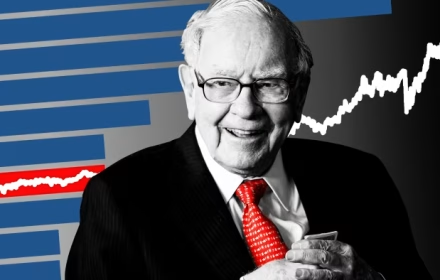Financial independence is not just a number in a bank account or a status in society. It is a state of internal and external stability where capital, income, and decisions are guided by strategy, not circumstances.
Material independence is the ability to manage money in a way that time ceases to be a hostage to a paycheck. It starts not with a million, but with understanding the value of every ruble and the ability to turn finances into a tool of freedom, not dependence.
Financial Independence: Explained Simply
What is financial independence? It is control over capital without relying on employers and loans. When capital generates passive income and expenses do not exceed profits, internal freedom emerges. It is measured not by the amount of money in the account, but by the amount of time that can be lived without external earnings.
It is not an abstraction or a motivational slogan. It is a state where income from assets fully covers expenses, and work becomes a choice, not an obligation.
The concept did not emerge yesterday: as far back as 1992, Joe Dominguez formulated the idea of rejecting “life for a paycheck” in the book “Your Money or Your Life.” Today, in conditions of unstable currencies and rising inflation, financial freedom is transforming from a dream into a necessity.
Mechanics of Moving Towards Freedom
Basic formula: income – expenses = savings.
Savings turn into capital, which works through investment.
A systematic approach starts with budgeting. Every ruble is assigned a role – covering needs, reserves, investments, or capital growth. A financial safety cushion provides 6-12 months of stability. With an average monthly expense of $800, the cushion equals $4,800-9,600. This reserve protects capital from asset sales during crises and reduces stress.
Psychology and Mindset
The psychology of financial independence is based on investor discipline and mindset. Without internal control, even high profits can turn into a debt trap. A person with an income of $3,000 and expenses of $2,900 is not free because they are dependent on their paycheck. This is a result of habits, not chance. Discipline builds a system: tracking expenses, analyzing the budget, planning investments.
How to Achieve Financial Independence
Financial independence arises from deliberate actions, not random luck. It starts with understanding your goals and building a system where every dollar works for the future. The key is to turn money management into a habit, not a one-time effort. The optimal strategy includes three blocks: expense control, income growth, and investment.
Expense Control
Expenses should not exceed 70% of income. The remaining 30% forms capital. The simple rule of 50/30/20 (50% – needs, 30% – wants, 20% – savings) suits most people.
Even with modest incomes, discipline creates the foundation of capital.
Income Growth
Profit expands through developing skills, additional employment, monetizing hobbies. It is important not only to earn more but also to manage money systematically. Financial freedom requires the ability to allocate capital, not just accumulate it.
Financial Independence Through Investments
This is a path where money starts working for you, not the other way around. By intelligently allocating capital among different assets, a stable income stream can be created, gradually freeing you from dependence on a monthly paycheck.
Tools leading to independence:
- Stocks and bonds. The average return of the stock market over 10 years is 7-9% annually. Regular investing through an investment account allows for reducing the tax burden.
- Real estate. A classic instrument. The average rental yield in major cities is 5-7% per year, plus a 3-4% increase in value.
- Franchises and business projects. Profit above 15% is possible with proper management and market analysis.
- Cryptocurrency. High-risk but liquid asset. Suitable for a portfolio of no more than 10%.
- Investing in knowledge. A course that enhances professional value can pay off faster than any deposit.
This asset structure diversifies capital and forms passive income. Investments turn money into a tool of freedom, not a source of worry.
How to Start Investing from Scratch
Investing from scratch is not about large sums of money but about a systematic approach. It is important to learn to save regularly, even if the amounts seem insignificant. The first invested dollar shapes not only capital but also a new financial habit. The question is not about the amount but about the strategy.
The beginning lies in the habit of setting aside at least 10% of income. Even with a $500 salary, investing $50 monthly at an average return of 8% will create a capital of $9,000 in 10 years. The power of compound interest makes time the main ally.
Mistakes That Hinder Goal Achievement
Economic freedom requires not only knowledge but also discipline. Even small mistakes in money management can significantly delay progress towards independence.
Common mistakes that slow progress:
- Living “paycheck to paycheck” without a budget;
- Consumer loans, not for development;
- Ignoring inflation and money devaluation;
- Lack of an economic safety cushion;
- Investing without risk analysis;
- Chaotic spending influenced by emotions.
Understanding one’s own mistakes becomes the starting point for correcting them. By fixing financial habits, even limited profits can be transformed into a reliable growth tool.
Conclusion
Financial independence is the result of discipline, investments, and mindset. It does not come suddenly; it is built step by step through tracking, analysis, and action.
Every asset, every percentage of return, every refusal of unnecessary spending brings closer to freedom. Capital is created by time, knowledge, and persistence.
 en
en  ru
ru  de
de  ar
ar  es
es  hi
hi  fr
fr  nl
nl  it
it  pt
pt  el
el 



